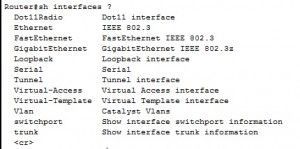
RD line-Line through which the data transmits from TD line-Line through which the data transmits from The transmitted data (TD) lines and receives data across received When you send the information, it transmits data across It sets its CTS signal to a marked state to indicate to If the DTE is not able to receiveĭata-because of buffer conditions, for example-it sets It sets its RTS signal to a marked state all 1s to indicate When the DTE device is ready to receive data: This establishes the link and traffic can pass. The DCE transmits a DSR signal to the DTE, which responds
LOOPBACK SERIAL SERIAL

I'm not sure why that would happen.Īfter testing the other ports that were showing 0 on transmit and receive, I noticed that I actually am seeing the transmit value increase, but they are unable to receive. So, I can cat that file any time before I run the python script, as many times as I want, but immediately after I run that Python, I can't cat the file, it just immediately returns with nothing. There's a few more serial ports, but they all have 0 tx and rx, and on port 03F8, the tx and tx increase when I send to the serial port ttyS0Īnother problem/symptom that could be related is that after I run the python script, I'm no longer able to cat /dev/ttys0 There is no change to this output when the echo command to the port is running with or without the cable connected.Ĭheck that the transmit and receive numbers change Output: /dev/ttyS0, UART: 16550A, Port: 0x03f8, IRQ: 4ĬTS and similar pins change when signal applied If I run without sudo I get a blank line returned Output: Error I will have to copy in later.

Output: crw-rw-, 1 user group 4, Date /dev/ttyS0 Like I said, I get the expected output from both tests, but I get the same output whether the cable is connected or not.Ĭhecking if interface is really a character device The same thing happens when I use the much shorter and simple serial test shown below Ser = serial.Serial(COM_PORT, BAUD_RATE, timeout=1, parity=serial.PARITY_NONE, rtscts=False, dsrdtr=False)
LOOPBACK SERIAL CODE
In case it's useful information I'm using pySerial shown below (I had to type some of it from memory so I apologize if there are errors, but my question isn't about the code as much as it is how these ports actually work) import serial
LOOPBACK SERIAL SOFTWARE
Is there some kind of software loopback that already exists for ports in Linux? I have something in python that tests the port, but I've found that the program returns the expected values even when my loopback isn't attached.

I'm new to using serial ports, and I have a loopback cable for serial on a Centos 7 machine.


 0 kommentar(er)
0 kommentar(er)
